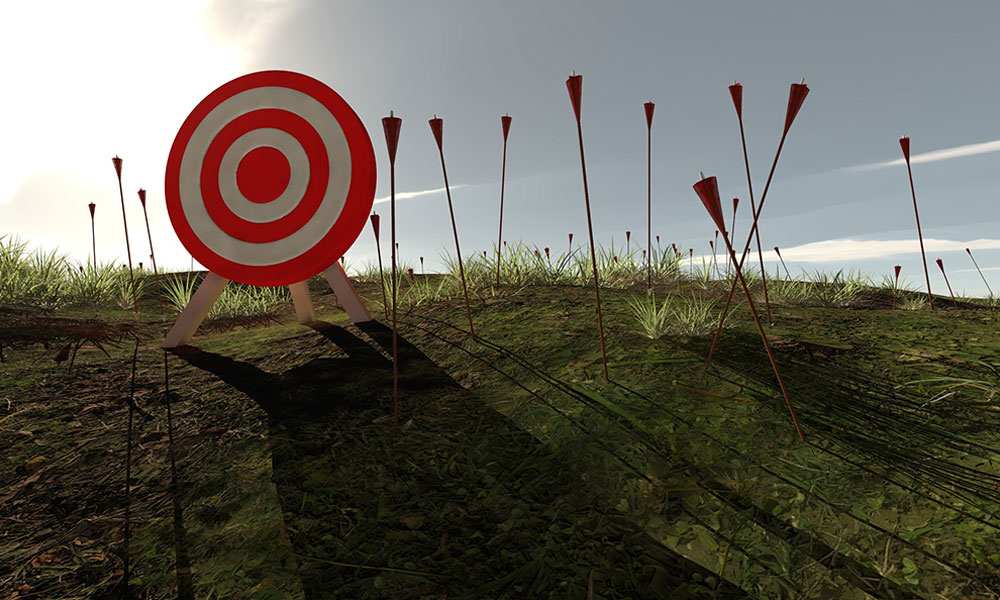In the developmental priorities for many of our mid-level (and senior) executives, one key area that jumps out is the need to think more strategically. I have seen that this skill set along with inspirational leadership, tends to hold back many leaders from progressing further. This can also get quite frustrating for those who are given this feedback as many companies don’t offer concrete ways to develop stronger strategic orientation.
At an organizational level, a lack of strategic thinking can also become a big impediment. In 3 Simple Habits to Improve Your Critical Thinking, published in the Harvard Business Review, Helen Lee Bouygues writes:
Too many business leaders are simply not reasoning through pressing issues, taking the time to evaluate a topic from all sides. Leaders often jump to the first conclusion, whatever the evidence. Even worse, C-suite leaders will just choose the evidence that supports their prior beliefs.
So, this week, my message focuses on how to start thinking and leading more strategically.
Overloaded with day-to-day work, many leaders take a “heads down” approach to their jobs and fail to “look up” regularly. This causes them to miss important information, including business drivers, key trends and industry context.
They fail to frame options, assess alternatives and define clear choices. Since strategic thinking requires getting more comfortable with uncertainty, many leaders take refuge in near-term execution and avoid developing this critical muscle.
In the Harvard Business Review article, Strategic Leadership: The Essential Skills, the authors highlight key capabilities that form the basis for strategic thinking, identified through research conducted by Wharton School and consulting firm Decision Strategies International. The strategy skillset includes four abilities:
1. Anticipate
Do you regularly scan the business environment for new opportunities, even on the periphery? If not, you may fail to spot and capitalise on promising trends. At an organisational level, the lack of future-focused thinking can lead to huge missed opportunities. To improve this skill, the authors recommend using research and simulation to understand competitor perspectives and predict potential disruption. If a fast-growing rival has taken a puzzling business decision, try to figure out their reasoning; are they on to something you’ve missed? In addition, if you’ve lost any customers recently, ask yourself why.
2. Challenge
The willingness to challenge assumptions (your own as well as other people’s) lies at the core of strategic thinking. Instead of basing decisions on foregone conclusions, we must proactively pursue divergent lines of thought and ask uncomfortable questions – this is essential for innovation. The ‘Five Why’s’ are a helpful tool to go beyond the obvious and identify the root causes of problems. Leaders can also facilitate genuine debate by holding “safe zone” meetings where dissent and challenge are invited and welcomed.
3. Interpret
Strategic observation and inquiry bring a slew of conflicting, ambiguous information, which then needs to be framed, synthesised, processed and turned into helpful insights. I have found that many leaders struggle with structuring the options and distilling the information into what truly matters. To hone your ability to connect the dots, zoom in to look at the details, then zoom out to look at the bigger picture and spot general patterns.
4. Decide
All leaders occasionally need to make quick decisions with incomplete information. Instead of getting trapped in a go/no-go binary, reframe the decision by asking, “What other options do we have?” Big decisions can be further divided into smaller segments to better understand their implications. Finally, being strategic means balancing rigor and speed, as well as tweaking your decision-making process based on the timeline of the project.
Strategic thinking can’t be done automatically, on the fly. To reap its benefits, you need a more intentional approach. Here are four ways to integrate strategic thinking into your work routine:
1. Schedule time for reflection
In 5 Ways To Develop More Strategic Thinking, the author recommends creating a regular slot in your calendar for reflection:
Set aside time alone for strategic thinking/planning at least monthly, if not weekly. Use this time to reflect, research, ideate and dream, not to “do” things. Some leaders, given this assignment, need a little help to productively use the time. But once they start this practice, they cherish the time and guard it protectively.
Add a new dimension by pairing with a valued thought-partner or small group. Leaders report this practice helps them become more strategic in their thinking as well as less stressed and more engaged.
2. Prioritise high-stakes situations
Apart from scheduled reflection time, there may be other situations where strategic thinking is the need of the hour. When the stakes are particularly high, it’s good to take a step back, question assumptions and look at the larger picture. For example, if the initiative you’re considering is going to use up significant time and resources over the next 2-3 years, make sure to take a strategic approach. Don’t let myopic, short-term thinking lead the way. Look at the plan from all angles and challenge basic beliefs about the business, the future of the market and customer expectations.
3. Unlock the power of questions
In 4 Ways to Improve Your Strategic Thinking Skills, Nina A. Bowman advises asking tough questions to practice strategic thinking. Thoughtful inquiry helps you uncover possibilities and visualise new outcomes. Here are some questions to consider while working on projects:
- What does success look like in Year 1? What does it look like in Year 3?
- What could impact the outcome in a negative way?
- What are the early signs of success/failure?
- What do business partners need to understand to ensure its success?
- Do the outcomes support the broader goals of the organization?
4. Diversify thought
In the article mentioned previously, Bouygues highlights the importance of soliciting a range of different perspectives, without which we tend to fall into groupthink. If you only interact with those who share your personal views, your thinking becomes narrow and rigid. Bouygues suggests simple ways to break out of this thought rut:
It’s crucial to get outside your personal bubble. You can start small. If you work in accounting, make friends with people in marketing. If you always go to lunch with senior staff, go to a ball game with your junior colleagues. Training yourself this way will help you escape your usual thinking and gain richer insights.
Of course, the need for strategic thinking isn’t limited just to senior leaders. Ideally, it should happen at every level of the organisation. Here are four ways in which you can encourage your team members to plan and act more strategically.
1. Share the big picture
It’s tough to think strategically if you’re focused only on your individual role, with little understanding of the broader organisational strategy. Leaders should communicate the company’s big goals and long-term thinking to their teams on a regular basis. Create an effective narrative that identifies present challenges and opportunities and defines what long term success looks like. When there are shifts in strategy, share the available information and context so everyone can be on the same page.
2. Make time for strategy
Set aside some time at the beginning of each week for strategic planning – rather than instantly jumping back on the never-ending treadmill. As William Craig explains in Strategic Thinkers Are Found to Be the Most Highly Effective Leaders, this small step will help your team members build the habit of strategic planning:
Have your team or teams sit down for 15 minutes at the beginning of the work week to think about everything they need to do in the next five days. Encourage them to break their time into manageable, modular chunks of time. This practice encourages deadline-mindedness, but you’ll find it also serves as a segue into even longer-term planning. Plotting a week’s worth of work and responsibilities will smoothly turn into monthly and then quarterly planning, and so on.
3. Facilitate mentorship
Structured conversations with a mentor can be quite stimulating. As a mentor, you can help frame the issues and ask guiding questions. You can share your observations, discuss the issues and provide feedback in a safe environment.
4. Structure communication
In 4 Ways to Improve Your Strategic Thinking Skills, Nina A. Bowman explains how a leader’s communication style can help their team think more strategically:
Strategic thinkers…prioritize and sequence their thoughts. They structure their verbal and written communication in a way that helps their audience focus on their core message.
Add more structure to your communication. Group and logically order your main points, and keep things as succinct as possible.
Prime your audience by giving them a heads up on the overarching topics you want to address so they are prepared to engage in a higher level conversation, not just the tactical details.








Comments